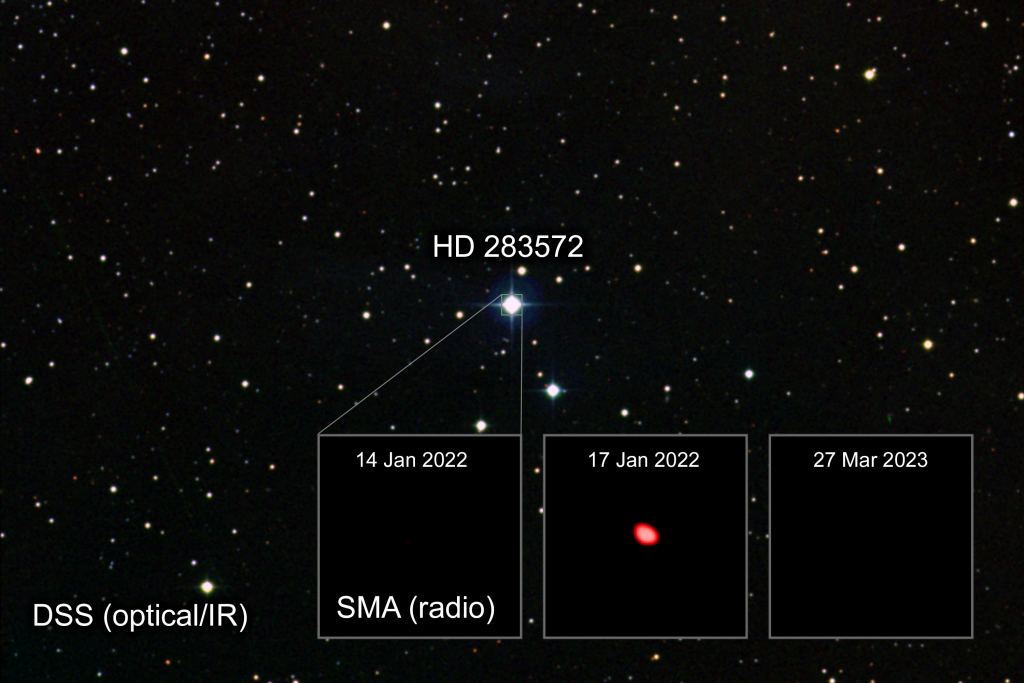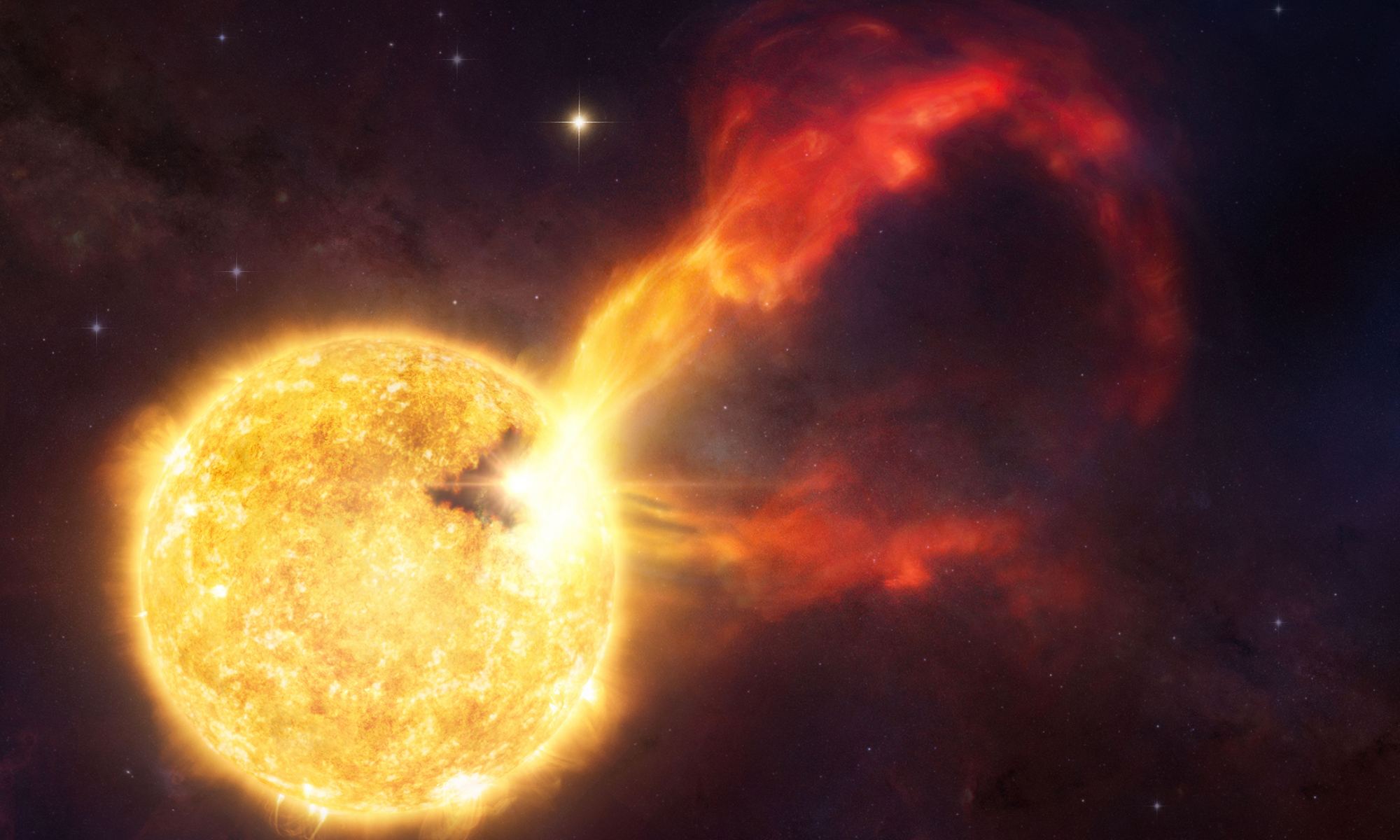Why would a young Sun-like star suddenly belch out a hugely bright flare? That’s what astronomers at Harvard Smithsonian Astrophysical Observatory want to know after they spotted such an outburst using a sensitive submillimeter-wave telescope. According to Joshua Bennett Lovell, leader of a team that observed the star’s activity, these kinds of flare events are rare in such young stars, particularly at millimeter wavelengths. So, what’s happening there?
Lovell and his team targeted the star, called HD 283572, in a search for circumstellar dust. It’s fairly young—about the same age the Sun was when our planets were first forming. It lies some 400 light-years away and is roughly 40 percent more massive than our star. During the outburst, it brightened up by about a factor of a hundred over 9 hours. The flare released about a million times more energy than any millimeter flares seen on any stars near the Sun.
The whole thing was pretty unusual because at first, it didn’t give any indication that it was about to flare, according to Lovell. “We were surprised to see an extraordinarily bright flare from an ordinary young star. Flares at these wavelengths are rare, and we had not anticipated seeing anything but the faint glow of planet-forming dust.”
Lovell and his team continued to observe the star using the submillimeter array on Mauna Kea in Hawai’i for several months. The hoped to see it flare again, but it remained quiet. “Our findings confirm that these flare events are rare at millimeter wavelengths, but that these can be extremely powerful for stars at this young age,” he said.

Why Would a Young Star Flare?
Young stars do exhibit flare activity as they evolve, particularly red dwarf stars. However, Sun-like stars may not have as many intense flares. The event at HD 283572 raises questions about what sort of flares the Sun experienced in its infancy. And, it would be interesting to find out the effect they had on the rest of the Solar System.
So far, the team has only caught one flare at HD 283572. That makes it pretty tough to figure out exactly why it burst out so fiercely. “It’s a real puzzle and there are a range of mechanisms that could be at play. Interactions with unseen companion stars or planets, or periodic starspot activity are two possibilities, but what remains beyond doubt is how powerful an event this was,” said team member Garrett Keating. “Any potential planets developing in this system would have been hammered by the intense power of this flare. I wouldn’t want to grow up there!”
In a paper describing their work, the team suggests that the millimeter variability they witnessed could have several causes. One idea is that the flare emissions come from radiation emitted by charged particles moving rapidly in a magnetic field. This is called gyro-synchrotron/synchrotron radiation. It typically appears in the rapidly changing magnetic fields above sunspots (or starspots, on other stars). The flare could also stem from activities stirred up by interactions with an unseen companion.
Next Steps
Either cause is possible, but astronomers need to do more studies of the star to pin it down. So, the next step is to take more observations of this star and others like it to catch another flare. According to team member Ramisa Akther Rahman, the group is running another submillimeter array campaign to study stars similar to HD 283572. “By combining SMA data with longer wavelength observations, we are also able to probe the physics of flares and their emission mechanisms. I have worked on that using archival data from the Very Large Array,” said Rahman, a student at College of William and Mary, and former summer intern with Lovell.
Further studies will go a long way toward explaining the causes and frequency of flares this star experiences. The fact that it’s so young and similar to the Sun, hints at what could have happened early in our Solar System’s history. If young sun-like stars do burst out with heavy activity, that raises questions. What does that do to any planets that are forming around the star? Strong flares can affect planetary atmospheres (particularly worlds without strong magnetic fields). Stellar activity could go so far as to limit a planet’s atmospheric growth. In the worst case, it would likely prevent a planet from even forming one. And, if there’s still only a dust disk around such a star, could such outbursts affect the process of planetary formation?
For More Information
Extreme Eruption on Young Sun-like Star Signals Savage Environment for Developing Exoplanets
SMA detection of an extreme millimeter flare from the young class III star HD 283572

